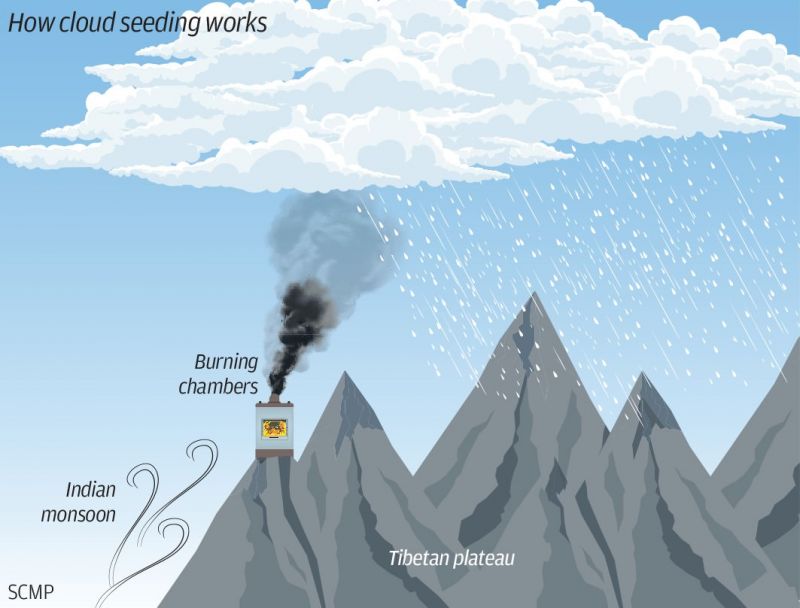China is Building a Rain-making Network Three Times the Size of Spain
Published on by Water Network Research, Official research team of The Water Network in Technology
China is testing cutting-edge defence technology to develop a powerful yet relatively low-cost weather modification system to bring substantially more rain to the Tibetan plateau, Asia’s biggest freshwater reserve.
By Stephen Chen

Image source: South China Morning Post
The system, which involves an enormous network of fuel-burning chambers installed high up on the Tibetan mountains, could increase rainfall in the region by up to 10 billion cubic metres a year – about 7 per cent of China’s total water consumption – according to researchers involved in the project.
Tens of thousands of chambers will be built at selected locations across the Tibetan plateau to produce rainfall over a total area of about 1.6 million square kilometres (620,000 square miles), or three times the size of Spain. It will be the world’s biggest such project.
The chambers burn solid fuel to produce silver iodide, a cloud-seeding agent with a crystalline structure much like ice.
The chambers stand on steep mountain ridges facing the moist monsoon from south Asia. As wind hits the mountain, it produces an upward draft and sweeps the particles into the clouds to induce rain and snow.
“[So far,] more than 500 burners have been deployed on alpine slopes in Tibet, Xinjiang and other areas for experimental use. The data we have collected show very promising results,” a researcher working on the system told the South China Morning Post.
The system is being developed by the state-owned China Aerospace Science and Technology Corporation – a major space and defence contractor that is also leading other ambitious national projects, including lunar exploration and the construction of China’s space station.
Read full article: South China Morning Post
Media
Taxonomy
- Resource Management
- Water Access
- Water Supply
- Stormwater Management
- Integrated Water Management
- Access
- Community Supply
- Water Management
- Infrastructure
- Water Resource Management
- Infrastructure Management